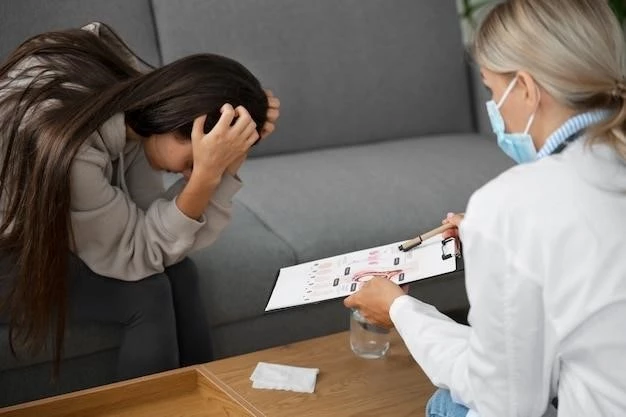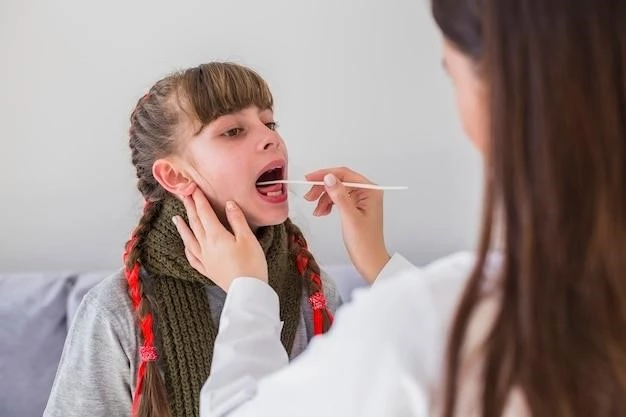Understanding Entomophthoramycosis
Entomophthoramycosis, also known as Basidiobolomycosis, is a rare fungal infection caused by fungi of the order Entomophthorales in the class Zygomycota. It primarily affects individuals who are immunocompromised. Early diagnosis through histopathology is crucial to guide treatment with antifungal medication.
Introduction to Entomophthoramycosis
Entomophthoramycosis, also known as Basidiobolomycosis, is a rare fungal infection caused by fungi of the order Entomophthorales in the class Zygomycota. These fungi are commonly found in soil and decaying organic matter, making them potential pathogens that can infect humans. Entomophthoramycosis primarily affects individuals with weakened immune systems, such as those who are immunocompromised due to conditions like HIV/AIDS, organ transplants, or certain medications that suppress the immune system.
The two main groups of fungi responsible for causing Entomophthoramycosis are Entomophthorales and Basidiobolomycetes. These fungi typically enter the body through the skin, often through minor cuts or injuries, leading to the development of the infection. Once inside the body, the fungi can cause a range of symptoms, from skin lesions to systemic infection of internal organs.
It is essential to raise awareness about this rare but serious mycosis to ensure early detection and prompt treatment. Understanding the basics of Entomophthoramycosis can help individuals recognize the symptoms and seek medical help when needed. With proper diagnosis and timely intervention, the outcomes of Entomophthoramycosis can be improved, reducing the risk of complications associated with this fungal infection.
Types of Fungi Causing Entomophthoramycosis
Entomophthoramycosis is primarily caused by fungi belonging to the order Entomophthorales and the class Zygomycota. Within this order, two main groups of fungi are known to cause this rare fungal infection⁚ Entomophthorales and Basidiobolomycetes. These fungi are commonly found in the environment, residing in soil and decaying organic matter.

It is important to be aware of the types of fungi that can lead to Entomophthoramycosis, as early identification of the causative agent can help guide appropriate treatment measures. Individuals who may come into contact with soil or have occupations that involve exposure to organic material should take precautions to prevent fungal infections.
Understanding the diversity of fungi that can cause Entomophthoramycosis is crucial in recognizing the different manifestations of the infection. By being informed about the types of fungi that can lead to this mycosis, individuals and healthcare professionals can work together to ensure accurate diagnosis and effective management of Entomophthoramycosis.
Symptoms of Entomophthoramycosis
The symptoms of Entomophthoramycosis can vary depending on the type of fungi causing the infection and the part of the body affected. Common symptoms include skin lesions, which may appear as raised nodules or ulcers with a hardened border. These skin lesions can be painful, itchy, and may drain pus.
In cases of systemic infection, where the fungi spread to internal organs, individuals may experience fever, abdominal pain, difficulty breathing, and swollen lymph nodes. Systemic Entomophthoramycosis can be severe and potentially life-threatening if not diagnosed and treated promptly.
It is essential to recognize the early signs and symptoms of Entomophthoramycosis to seek medical attention promptly. If you notice any unusual skin changes, especially if accompanied by fever or other systemic symptoms, consult a healthcare provider for further evaluation and management. Timely diagnosis and treatment are key to improving outcomes and reducing the risk of complications associated with this fungal infection.
Diagnosis of Entomophthoramycosis
Diagnosing Entomophthoramycosis involves a combination of clinical assessment, laboratory tests, and histopathological examination. Healthcare providers may perform a physical examination to assess skin lesions or other visible symptoms and inquire about any recent travel or environmental exposures.
Laboratory tests, such as skin biopsies or tissue samples from affected areas, are essential for identifying the presence of fungal spores or hyphae under a microscope. Histopathology can help determine the type of fungi causing the infection and guide treatment decisions, including the use of specific antifungal medications.
In some cases, imaging studies like CT scans or MRIs may be necessary to evaluate the extent of systemic infection and identify potential complications. Blood tests can also aid in assessing the patient’s immune status and detecting any abnormalities associated with fungal infections.
If you suspect you may have Entomophthoramycosis based on your symptoms or exposure history, it is crucial to consult a healthcare professional for proper evaluation and diagnosis. Early detection of this fungal infection is crucial for initiating timely treatment and preventing the progression to severe forms of the disease. Collaborating with healthcare providers throughout the diagnostic process is essential for effective management of Entomophthoramycosis.
Treatment Options
The treatment of Entomophthoramycosis typically involves the use of antifungal medications to target the specific fungi causing the infection. Your healthcare provider may prescribe oral antifungal drugs, such as itraconazole or amphotericin B, based on the severity of the infection and the type of fungus identified through diagnostic tests.
In some cases, surgical intervention may be necessary to remove infected tissue or drain abscesses, especially for skin lesions that do not respond to antifungal therapy alone. Surgical procedures can help improve the effectiveness of treatment by reducing the fungal burden and preventing further spread of the infection.
During the course of treatment, it is important to follow your healthcare provider’s recommendations closely and take all prescribed medications as directed. Adhering to the full course of antifungal therapy is essential to ensure complete eradication of the fungi and reduce the risk of recurrence.
Regular follow-up appointments with your healthcare team are crucial to monitor your progress, evaluate treatment response, and address any side effects or complications that may arise during therapy. By actively engaging in your treatment plan and maintaining open communication with your healthcare provider, you can optimize the outcomes of Entomophthoramycosis treatment and promote your overall recovery.
Prevention of Entomophthoramycosis
Preventing Entomophthoramycosis involves minimizing exposure to the fungi that cause the infection, especially for individuals with weakened immune systems. To reduce the risk of contracting this fungal disease, consider the following preventive measures⁚
- Avoid direct contact with soil, particularly in areas where fungi like Entomophthorales and Basidiobolomycetes are prevalent.
- Use appropriate protective gear, such as gloves and long sleeves, when handling potentially contaminated soil or organic materials.
- Keep cuts, scrapes, and wounds clean and covered to prevent fungal spores from entering the body through broken skin.
- Maintain good hygiene practices, including regular handwashing with soap and water, especially after outdoor activities or working in the garden.
- Avoid activities that may increase the risk of fungal exposure, such as digging in soil without protective measures or handling decaying plant matter.
If you are immunocompromised or have underlying health conditions that make you more susceptible to fungal infections, consult your healthcare provider for personalized recommendations on how to prevent Entomophthoramycosis. By taking proactive steps to minimize exposure to fungi in the environment, you can help reduce the likelihood of developing this rare fungal disease and protect your overall well-being.
Complications Associated with Entomophthoramycosis
Entomophthoramycosis, if left untreated or undiagnosed, can lead to severe complications, particularly in individuals with weakened immune systems. Systemic infection of internal organs by the fungi responsible for Entomophthoramycosis can result in life-threatening complications, including⁚
- Sepsis⁚ The spread of fungal infection throughout the bloodstream, leading to systemic inflammatory response syndrome.
- Organ damage⁚ Fungal invasion of vital organs such as the lungs, liver, or brain, causing impairment of their normal function.
- Abscess formation⁚ Collection of pus within tissues, which may require surgical drainage to prevent further spread of infection.
- Secondary infections⁚ Weakened immune defenses can make individuals more susceptible to opportunistic infections;
Complications associated with Entomophthoramycosis highlight the importance of early diagnosis and prompt initiation of appropriate treatment. If you experience symptoms suggestive of Entomophthoramycosis, seek medical attention immediately to prevent the progression of the infection and reduce the risk of complications. Collaborate closely with your healthcare team to address any concerns and optimize the management of this fungal disease.
Managing Symptoms
Effective management of symptoms associated with Entomophthoramycosis is essential for improving quality of life and supporting the overall treatment process. If you are experiencing symptoms such as skin lesions, fever, or swollen lymph nodes, consider the following strategies to help alleviate discomfort and promote healing⁚
- Follow your healthcare provider’s treatment plan diligently, including taking prescribed antifungal medications as directed.
- Practice good wound care by keeping skin lesions clean, dry, and covered to prevent secondary infections.
- Manage fever by staying well-hydrated, resting, and using over-the-counter fever-reducing medications as recommended by your healthcare provider.
- Apply soothing ointments or creams to relieve itching or discomfort associated with skin lesions, following your healthcare provider’s advice.
- Monitor any changes in symptoms and report them to your healthcare team promptly for evaluation and adjustment of treatment, if needed.
Engage in open communication with your healthcare provider about any challenges or concerns you may have regarding symptom management. By actively participating in your care and adhering to recommended strategies, you can enhance your comfort level and contribute to the overall success of your treatment for Entomophthoramycosis.
Understanding Fungal Spores
Fungal spores play a crucial role in the transmission and development of Entomophthoramycosis, as they serve as the reproductive units of the fungi responsible for causing this infection. These microscopic structures are released by fungi into the environment and can enter the body through inhalation, ingestion, or contact with broken skin.
Once fungal spores gain access to the human body, they can germinate under favorable conditions, leading to the establishment of fungal infections like Entomophthoramycosis. Understanding the lifecycle of fungal spores and their potential routes of entry can help individuals take proactive measures to minimize exposure and prevent infection.
To reduce the risk of Entomophthoramycosis, it is essential to avoid direct contact with environments where fungal spores are abundant, such as soil or decaying organic matter. Practicing good hand hygiene, wearing protective gear when working outdoors, and promptly treating any skin injuries can help limit exposure to fungal spores and decrease the likelihood of developing fungal infections.
If you have concerns about potential exposure to fungal spores or wish to learn more about preventive strategies, consult your healthcare provider for personalized advice. By staying informed about the role of fungal spores in Entomophthoramycosis transmission, you can take proactive steps to safeguard your health and well-being.
Seeking Medical Help
If you suspect that you may have Entomophthoramycosis or are experiencing symptoms such as skin lesions, fever, or swollen lymph nodes, it is crucial to seek prompt medical attention. Early diagnosis and treatment of this rare fungal infection are essential for better outcomes and to prevent potential complications.
When reaching out to a healthcare provider for evaluation of possible Entomophthoramycosis, be prepared to provide detailed information about your symptoms, medical history, and any recent exposures to soil or decaying organic matter. Your healthcare team may perform diagnostic tests, such as skin biopsies or imaging studies, to confirm the presence of fungal infection.
Collaborating with healthcare professionals experienced in treating fungal diseases like Entomophthoramycosis is key to receiving timely and appropriate care. Follow your healthcare provider’s recommendations for antifungal treatment, wound care, and symptom management diligently to support your recovery process.
Regular follow-up visits with your healthcare team will allow for monitoring of your progress, adjustment of treatment as needed, and addressing any concerns or new symptoms that may arise during the course of therapy. By proactively seeking medical help and actively participating in your care, you can work towards effectively managing Entomophthoramycosis and promoting your overall health and well-being.
